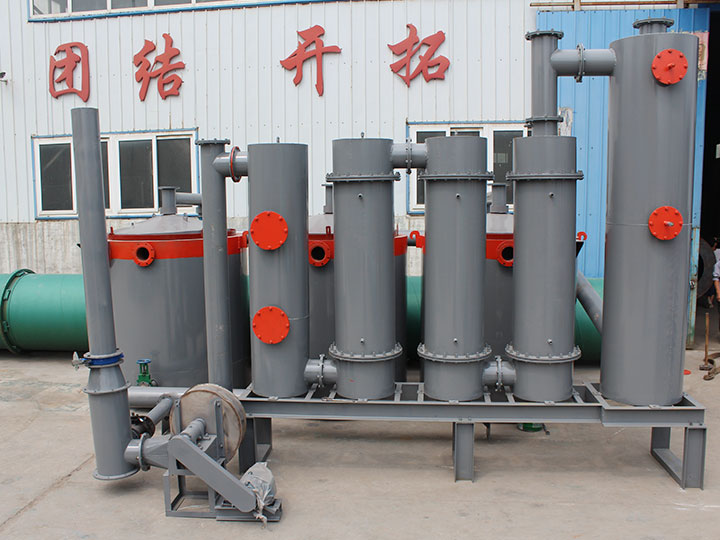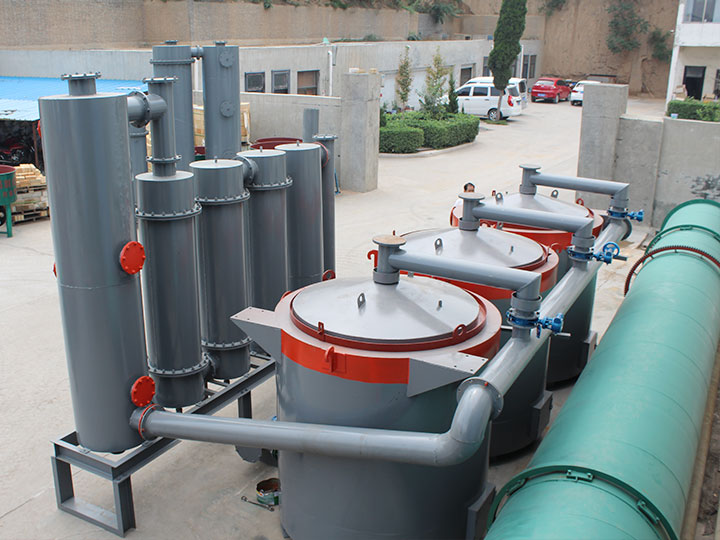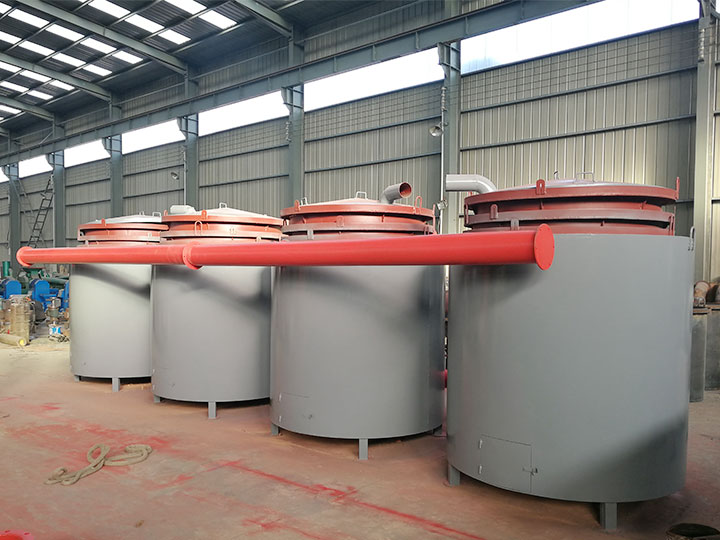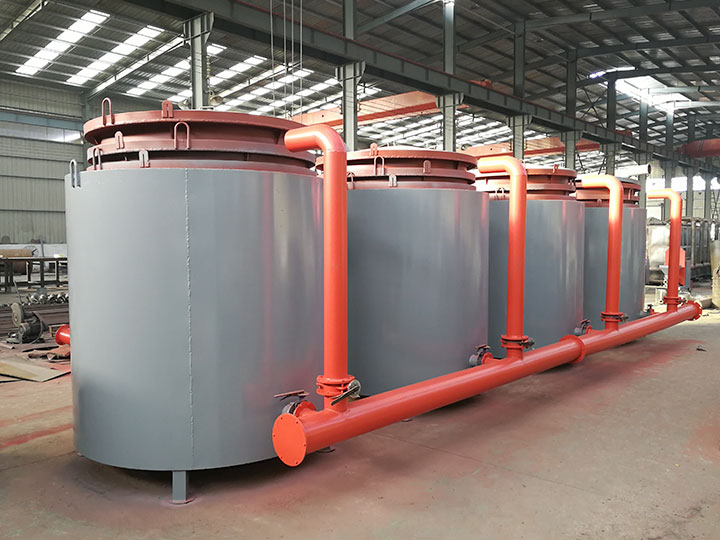提升式碳化炉是一种环保设备,专门设计用于木材或植物基含碳原料的高温热解碳化。它广泛应用于中大型炭业企业的木炭生产。
该设备采用悬挂式模块化结构和先进的热气体碳化技术,回收和再利用碳化过程中产生的可燃气体。这实现了自给自足的热能、节能和环保,有效解决了传统碳化炉所带来的高污染和高能耗问题。
每个碳化周期大约持续7-8小时,日生产能力为1-3吨,使其成为大规模连续木炭生产的理想选择。
哪些材料可以碳化?
提升式炭化炉适用于各种植物原料的碳化处理,包括但不限于:
- 原木、木棍、大树枝、硬木、竹子。
- 锯末棒、木屑压缩棒(用于木炭棒机)。
- 椰子壳、核桃壳、棕榈壳、花生壳、稻壳、树皮、稻草以及其他含碳的农业和林业废弃物。
与连续式碳化炉相比,该设备对原材料尺寸的适应性更强,特别适合碳化大体积、不规则形状的木材。
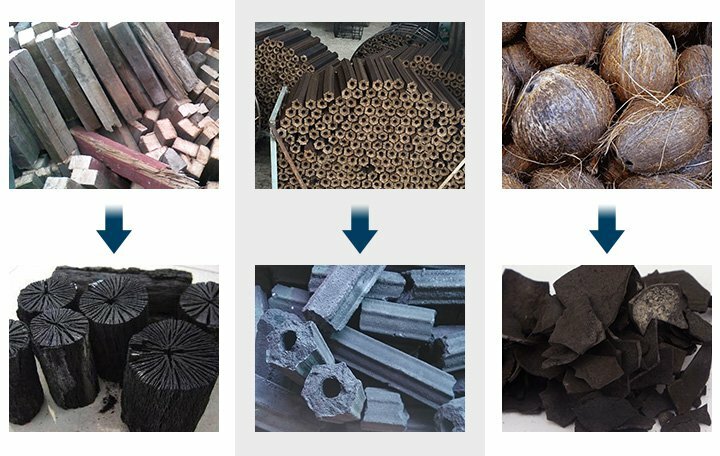
提升式碳化炉的结构
我们新型的碳化炉主要由燃烧室、碳化衬里、废气处理装置、余热利用系统和起重机系统组成。
该机器采用了将碳化炉和燃烧室分开的新结构,采用了碳化炉的可移动安装。
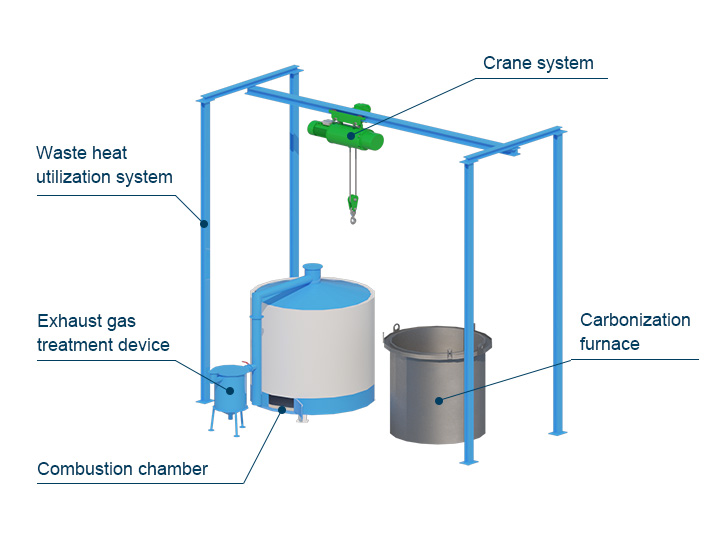
炉子的冷却是在燃烧室外进行的,因此可以实现连续工作,并大大缩短生产周期。燃烧室可以配备多个碳化炉,更换碳化炉后无需进行预热处理。这将大大提高碳化工作的效率,并节省能源和劳动力。
悬挂式碳化炉的工作过程
材料的碳化主要分为三个阶段:干燥阶段、碳化初始阶段和完全碳化阶段。
- 干燥阶段(0–160°C):点火后,炉温逐渐升高,原材料中的水分被蒸发,但材料本身的成分没有显著变化。
- 初级碳化阶段(160–280°C):材料开始热解,释放二氧化碳、一氧化碳、小量醋酸及其他物质,木材的结构开始发生变化。
- 完全碳化阶段(300–650°C):材料经历强烈的分解,产生液体如木焦油、醋酸和甲醇,以及可燃气体如甲烷和乙烯。这些气体在炉内燃烧,提高温度,最终将木材蒸馏成高质量的木炭。
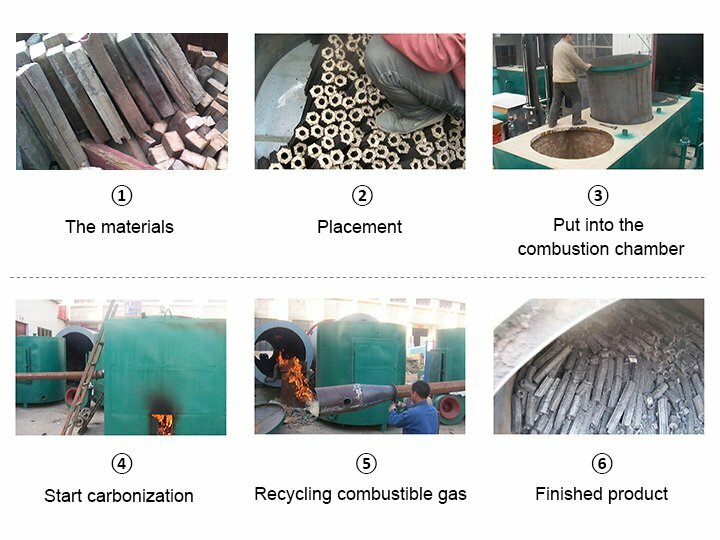
为了进一步提高木炭质量,可以将炉温提高到800°C–1000°C,以去除挥发性物质,增加碳含量和导电性,并生产高温碳或导电碳材料。
木炭碳化炉的优点
- 节能环保:在碳化过程中产生的可燃气体经过喷雾、冷却和净化后进行二次燃烧,实现自给自足的热能供应,降低燃料成本,消除直接排放,从而满足环境排放标准。
- 合理的结构和连续的操作:采用模块化设计,单个燃烧室可以与多个碳化室衬里交替使用,冷却和碳化同时进行,显著缩短生产周期,提高碳化效率。
- 省力操作:一套起重物料处理系统,配备≥2吨的起重机,使物料装卸变得简单快捷,显著降低了劳动力成本和身体负担。
- 长寿命:内腔采用高温耐磨材料制成,具有强大的耐热性和抗变形能力,确保耐用性和低维护成本。
- 自动温度控制和安全效率:配备烟气回收室和温度控制系统,有效调节碳化温度和时间,确保碳化质量和操作安全。
- 高时间利用率:标准配置包括两个内腔,能够同时进行冷却和碳化,实现交替工作流程的连续操作,确保更可靠的生产输出。
提升碳化炉技术参数
| 型号 | SL-1500 |
| 产能 | 2500-3000千克/24小时 (取决于材料) |
| 承载能力 | 2600-3000公斤/每8小时 |
| 一次碳化时间 | 8小时 |
| 尺寸 | 1940x1900x1900毫米 |
| 钢板厚度 | 6毫米 |
| 内炉尺寸 | 1.5×1.5米 |
| 重量 | 2.8千克 |
| 包括配件 | 一台机器包括3个炉子 |
| 电力 | 无需额外电源 |
| 每8小时生物质供热成本 | 每8小时50-80公斤废弃生物质 |
关于碳化炉的相关视频
悬挂式炭化炉在几内亚成功运行
我们向几内亚出口了一条炭化生产线。客户使用的炭化炉是这款提升式炭化炉。我们的工程师在客户工厂成功安装和测试后返回。安装后,培训工厂工人以确保工厂的顺利运行。
在本次演示结束时,我们希望您对我们的提升碳化炉有更深入的了解。如果您对我们的产品感兴趣,请随时与我们联系,我们将为您提供专业的购买服务。


